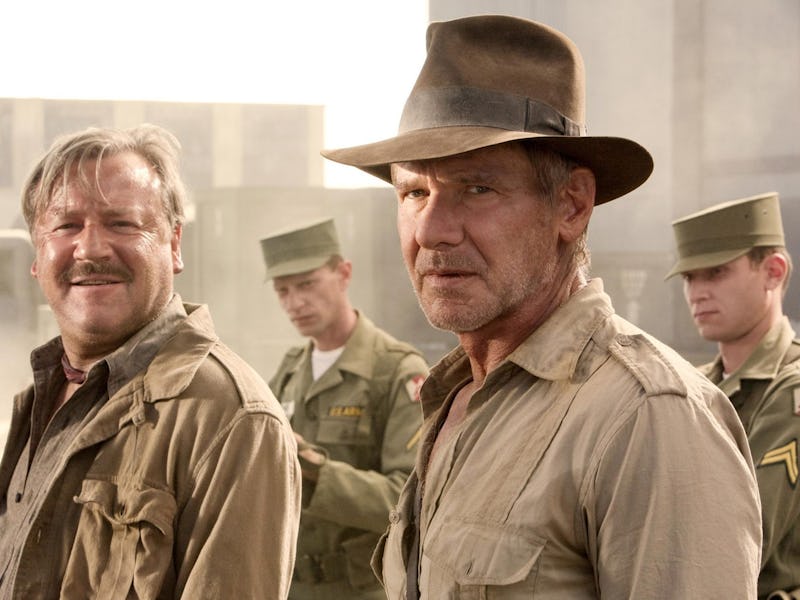Indiana Jones’ Most Divisive Sequel Was the Risky Push the Franchise Needed
Despite fans railing against a controversial plot twist, in retrospect, this movie reached a final frontier.

Indiana Jones was built on a legacy of vintage media. The swashbuckling fedora-wearing archaeologist went on huge globe-trotting adventures that were ripped from the pulp fiction action-adventure novels and movie serials of the 1930s. It’s a firm foundation to build a franchise, and the first three movies: Raiders of the Lost Ark, Temple of Doom, and The Last Crusade followed this pattern, each following Indy as he sought after a different religious artifact.
But 15 years ago, the series had to find a boundary to push. While the result was divisive, in hindsight it found the only way forward — and set up the next chapter along the way.
Indiana Jones and the Kingdom of the Crystal Skull was different for many reasons. Indiana Jones is no longer the young adventurer he once was. Suddenly, he’s an old man living in an age that doesn’t understand him: where science is valued more than his humanities, and where teen subcultures exist to confound him.
It’s this fish-out-of-water moment that leads to the first big setpiece of the movie, one that would go down in history: “nuking the fridge.” The scene, following Indy as he ends up in the middle of a nuclear test site and survives only by hiding in a fridge, is a microcosm of what this movie is trying to accomplish. It’s a little silly, somewhat based in science, but completely aware of its 1950s setting.
This setting established the much-maligned greaser character Mutt (Shia LaBeouf) and the natural Red Scare villain of the Soviet Union. Cate Blanchett absolutely devours the scenery as Irina Spalko, hamming it up like the strawman of a Russian villain Americans in the ‘50s would have imagined.
All of this is due to director Steven Spielberg and original creator George Lucas’ collective love of 1950s pulp science fiction novels. This also pushed the series out of its religious archaeology comfort zone and prompted the biggest plot twist in Indiana Jones history: Crystal Skull sends Indy on a search that leads him straight to ancient aliens.
Cate Blanchett plays a Societ agent on the hunt for alien knowledge in Kingdom of the Crystal Skull.
Gone are the religious artifacts of the past. In this movie, Indiana Jones goes full science fiction. It’s a risky choice, but a decade and a half later it makes perfect sense. The next evolution of action-adventure has always been science fiction, and Crystal Skull is the next evolution of Indiana Jones. It cements this by bringing back Marion Ravenwood, the love interest from Raiders of the Lost Ark, putting an end to one trilogy and perhaps opening the door to another.
Only a month out from the release of the next Indiana Jones adventure, Indiana Jones and the Dial of Destiny, this decision is becoming more and more obvious. Rumors surrounding the movie suggest it will involve time travel, another trope from sci-fi pulp novels. This latter chapter of Indiana Jones lives in a completely new world introduced by Crystal Skull, and though it suffered because of it, it was a noble sacrifice.